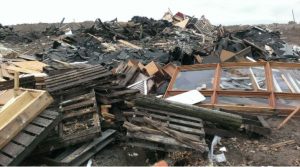bESTology Week 5-The Cycling of Materials
Published by Gwynn Moore on
bESTology-Week 5 The Cycling of Materials

Topics
- Landfills
- Types of Landfills
- Landfills toxic or not
Objective/Goal:
Students will understand the types of landfills and their role in modernization and keeping communities clean.
Introduction:
Modern landfills are well-engineered facilities designed to receive specific kinds of waste, including municipal solid waste (MSW), construction and demolition debris (C&D) and hazardous waste. Landfill facilities must be designed to protect the environment from contaminants, which may be present in the solid waste disposed in the unit. Resource: epa.gov/landfills
Research/Reflect/Brainstorm – Time to think and expand your knowledge!
Grab your BEST Journal, notebook or online doc for notes to document your learning. Use various sources such as books, magazines, and websites from below to learn more about energy, forms of energy, consequences, and possibilities.
Use various sources such as the internet, textbooks, magazines etc. to answer the questions below.
- What is a landfill?
- Why are there different types of landfills?
- Is a landfill important for a safe community?
- How do communities use landfills?
- How are hazardous materials handled at a landfill?
- Which landfills are best for a community?
- Does a community need more than one type of landfill?
Online Resources – list all links to material useful for research about the lesson topic
- BEST.org
- The Basics of Landfills
- Things You Might Not Know About Landfills
- Alabama Landfill Management
- UFC Material Recycle, Reuse of Materials
- RCRA Material Demolition and Reuse
- Are We Running Out of Landfill Space?
- C & D Landfills
- Sustainable Management of C & D Materials
- Unlined Landfills, a Disaster Waiting to Happen?
- Video-What happens at a Landfill
Activity – In small collaborative groups or individually share your learning with your team and school or community. Creation instructions for the different activities are accessed by the links.
BEST Connection – make connection(s) between the lesson and BEST Robotics program
- Create an entry for your Engineering Notebook sharing what you learned from your research and how it will help your team.
- Create an infographic or poster sharing the impact of landfills in your community for your Engineering Notebook
- Create a chart showing the different types of energy used in your community for your Engineering Notebook
Community Connection – make connection(s) between the lesson and your community
- Create a Public Service Announcement about landfills and C & D uses
- Create a short documentary movie about landfills in your community
- Create an infographic or poster sharing the differences between different types of landfills
Digital Citizenship
- Be sure to cite the sources and resources you used for your learning and projects by creating a Bibliography page in your project with the name of the websites and URL addresses
- Be sure to include the sources and resources used in your Engineering Notebook by adding the name of the websites, books etc. and the URL address
Bloom’s Taxonomy
Remember-content vocabulary: landfills, sustainable, lined, hazardous, interactions, communities, demolition, change, materials
Understand-research to learn more about the topic of renewable and fossil fuels
Apply-taking notes and synthesizing meaning from resources to build their knowledge
Analyze-determine the pros and cons of fossil fuels and renewable energy, costs and benefits
Evaluate-resources used for research to answer questions and develop notebook entry
Create-Engineering Notebook entry, Activity/Project completed and shared
Workforce Skills
Critical Thinking, Analyzing and Evaluating information, Creating, Writing, Research, Communication, Problem Solving, Collaboration
My Personal Journal